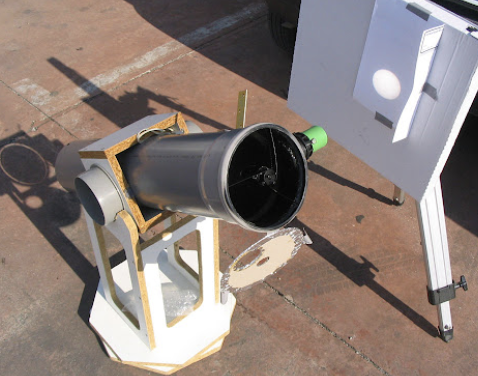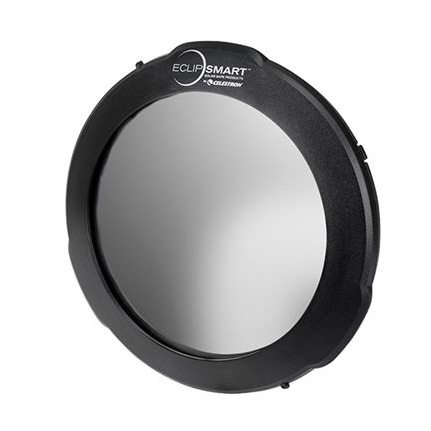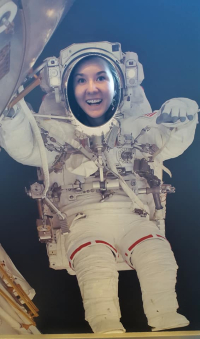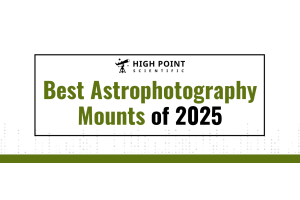
Everyone wants to look at the stars. When you buy a telescope, chances are the purpose is for stargazing. Astronomy is thought of as a night-centered discipline, and to a large extent, it is. But by focusing solely on the planets and outer stars, we’re leaving out the most important star to humankind: the Sun.
Yes, you can study the Sun using your telescope! All your life you’ve been told not to look directly at the Sun, but in astronomy, we like to bend the rules a little bit. Now, before you rush outside to set up, there are a few safety factors to go over. But once you know how to do it carefully, you can start admiring the beauty of the star that makes life on Earth possible.
Safety Information
It’s been said that Galileo went blind from observing the Sun, and while the myth is entirely false (he was in his 70s when he went blind and his days of observing the Sun were long past), there’s no denying that direct observation (either with the naked eye or a telescope) of the Sun is dangerous. But why? Here’s what happens:
When you look at the Sun, what you’re seeing is obviously a massive source of light. Many of these light rays are in the ultraviolet spectrum, and when your eyes do their job and focus these rays through your lenses, they can burn your retina tissues and damage the rods and cones. What rods and cones do is send information to the brain to interpret nerve impulses as vision. So, if you damage the rods and cones, you damage your eyesight.
Damage can be short-term and cause sensitivity and mild pain, while long-term damage can lead to a blind spot in the center of your eyes that will eventually repair itself in most cases. In other cases, however, the blind spot either remains or becomes a blurry zone that affects your vision for the rest of your life. So, how can you observe the Sun without risking damage to your eyesight?
The Safest Methods
First and foremost, you can’t point your telescope at the Sun and immediately look at the eyepiece. If naked eye observation can be damaging, imagine what could happen if you looked at all that light concentrated in a telescope.
Second, you might find DIY solutions online that offer “hacks” that allow you to make your own filters. Unless they use genuine solar filter sheets intended for telescope use, do not go for the homemade method! Things like CDs, camera filters, sunglass lenses, or other such filters that were not intended for prolonged exposure or use with a telescope should be avoided.
Instead, go with the following tried and true methods.
Pinhole Projection
The safest way to view the Sun through a telescope is by using pinhole projection. Face your telescope towards the Sun (but remember not to use the eyepiece to see if it’s aligned!) and use a sheet of white paper to project the image coming through the eyepiece. Move the sheet closer and farther away to experiment with image quality. You might be surprised by just how much you can see! Your projection might even be detailed enough to reveal large sunspots.

Solar Filters Made for Telescopes
If you want to go the more high-tech route and be able to use your telescope directly to view the sun, the only way to do so is by using solar filters. As mentioned earlier, these should be proper filters that are designed specifically for telescopes, not DIY filters or ones made for different purposes. You can find solar filters as well as solar telescopes (telescopes designed for solar observation) here. Our team of experts has created a Solar Filter Calculator that you can use to help determine which solar filter will work best for your specific telescope. Simply input the model of the telescope you plan on using to find out which solar filters will fit properly.
There are two different types of solar filters, one of which is far more expensive. Here’s a rundown on the two types and which purposes they’re suited for:

White Light Filters: White light filters allow in all light in the visible spectrum, but they filter it to such an extent that a tiny, tiny fraction of light from the Sun gets through: about 0.001%. With a white light filter, you can see about the same details as you can with the pinhole projection methods. Textures on the surface of the sun as well as sunspots will be visible.
White light filters can be made from either film or glass, so choose carefully based on where and in what situations you intend to use yours.
Hydrogen-Alpha Filters: Also called H-alpha filters, these solar filters differ from white light filters in that they only allow one wavelength of light to pass through. This wavelength is the one that we see as red light, which is emitted by the Sun’s hydrogen atoms (thus the name). In addition to filtering out other wavelengths, H-alpha filters also tone down the incoming light so that, like white light filters, they only allow through about 0.001% of what the Sun emits.
Contrary to what you’ve been told your entire life, you can look at the Sun safely! It just takes the right equipment, a bit of preparation, and a dash of common sense, and soon you’ll be seeing the details of the amazing star that makes life possible.

Learn More
Interested in learning more about observing the sun? Not sure where to begin? Check out our Astronomy Hub to learn more!











